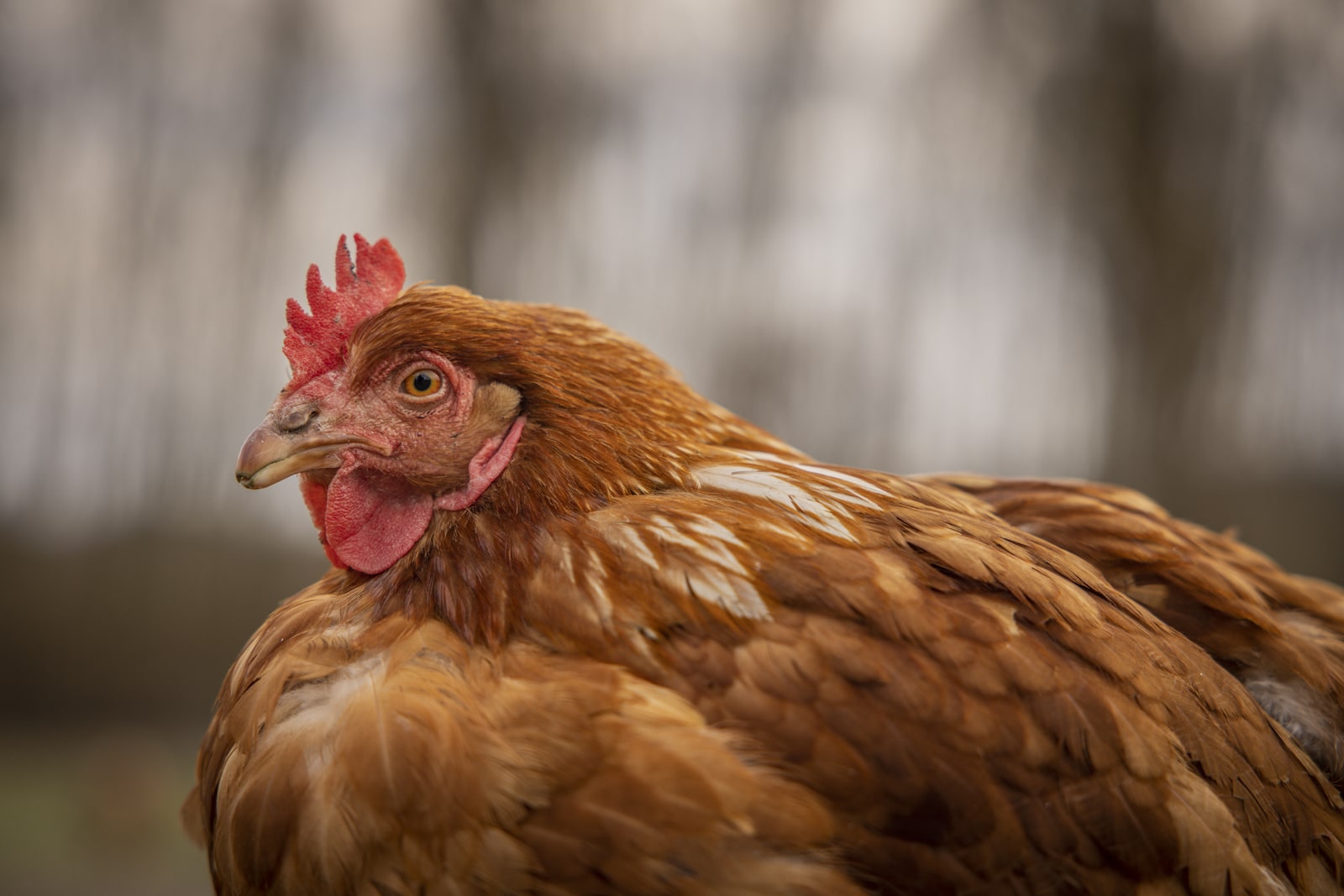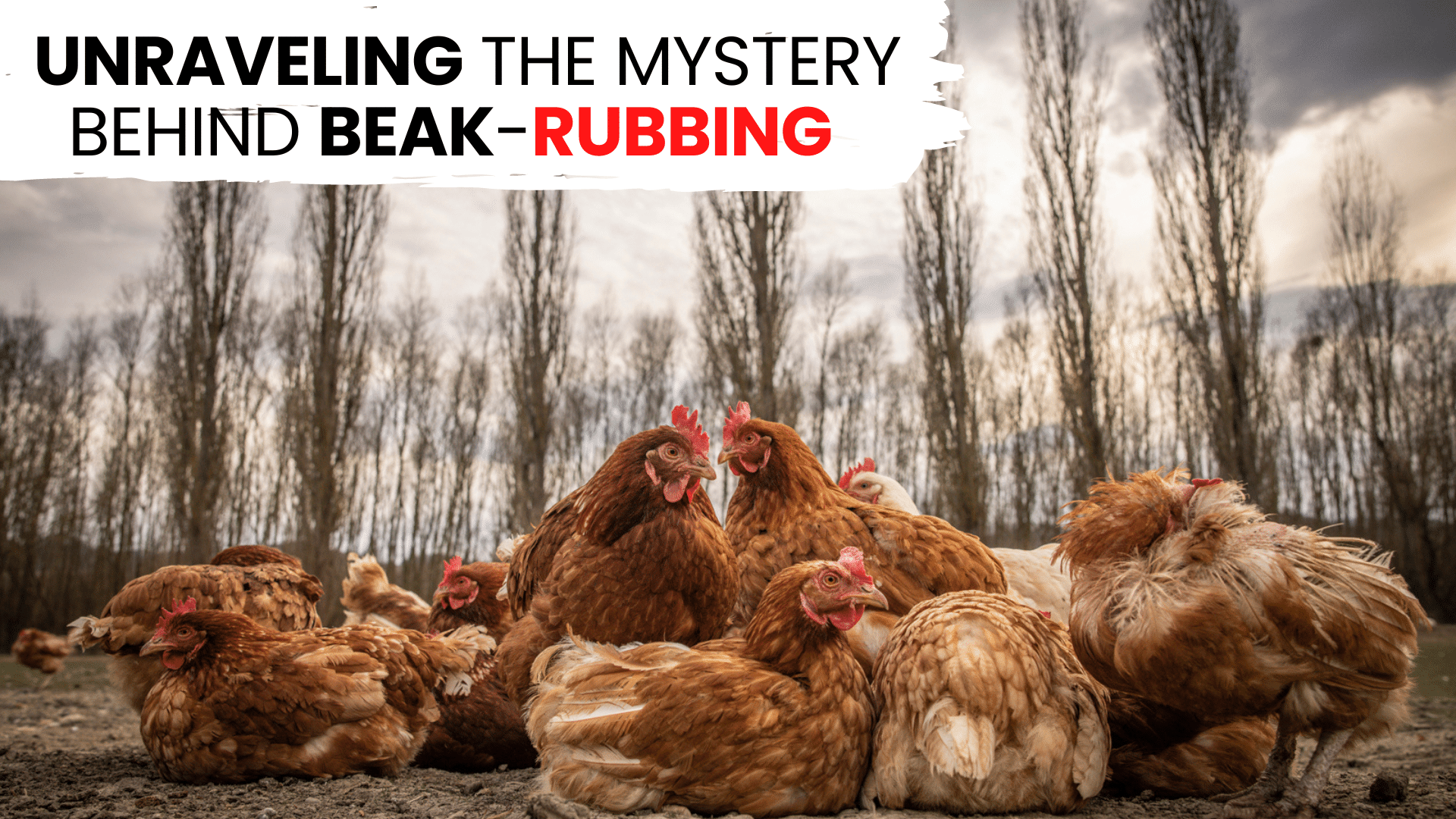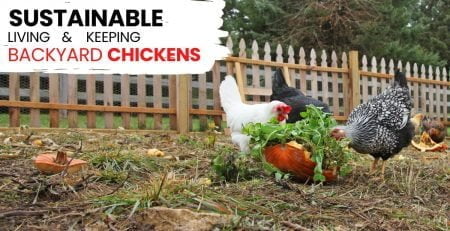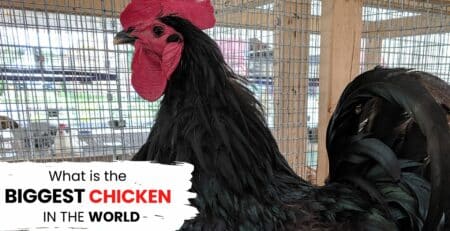Chickens have long been a staple of farms and backyards, providing us with fresh eggs and succulent meat. But have you ever stopped to wonder about their peculiar behavior? One such behavior that continues to baffle researchers and poultry enthusiasts alike is beak-rubbing. Why do chickens engage in this seemingly odd habit? What purpose does it serve? This article will delve into the fascinating world of chicken behavior and unravel the mystery behind beak-rubbing. We will shed light on this enigmatic phenomenon, from the science behind this behavior to its potential implications for their well-being.
Common chicken behaviors
Before we dive into the intriguing behavior of beak-rubbing, let’s take a moment to explore some of the common behaviors exhibited by our feathered friends. Chickens are social animals that live in hierarchical groups known as flocks. Within these flocks, various behaviors can be observed, such as pecking order establishment, dust bathing, scratching the ground for food, and vocalizing to communicate with each other.
Chickens are also known to engage in preening, a behavior where they use their beaks to clean and maintain their feathers. This grooming process helps to remove dirt, parasites, and excess oil from their plumage, keeping them clean and healthy. Preening also plays a crucial role in maintaining the insulating properties of their feathers, ensuring they are protected from the elements.
Beak-rubbing behavior in chickens
Now that we have a basic understanding of some common chicken behaviors let’s turn our attention to beak-rubbing. Beak-rubbing, also known as beak preening, is a behavior where chickens rub their beaks against various surfaces, including branches, perches, and even other chickens. This behavior is characterized by repetitive, rhythmic movements and can often be observed during periods of relaxation or rest.
At first glance, beak-rubbing might seem like a simple act of grooming, similar to preening. However, researchers have discovered that beak-rubbing serves a different purpose altogether. Unlike preening, which focuses on feather maintenance, beak-rubbing is primarily associated with the cleaning and maintenance of the beak itself. The beak is not only a vital tool for feeding but also plays a crucial role in social interactions and defense mechanisms. By engaging in beak-rubbing, chickens are able to keep their beaks clean and free from any debris that may hinder their functionality.
Possible reasons for beak-rubbing
While the primary function of beak-rubbing is to clean and maintain the beak, there may be other reasons why chickens engage in this behavior. One possible explanation is that beak-rubbing helps to alleviate any discomfort or itchiness that chickens may experience. Similar to how we might scratch an itch, chickens may rub their beaks against surfaces to relieve any irritation they may be feeling.
Another theory suggests that beak-rubbing serves as a form of self-soothing or stress relief. Just like how humans engage in behaviors such as nail-biting or hair twirling when feeling anxious or stressed, chickens may turn to beak-rubbing as a way to calm themselves down. This behavior may help them cope with the various stressors they encounter in their environment, whether it be changes in flock dynamics or exposure to unfamiliar stimuli.

Observations and studies on beak-rubbing behavior
To gain a deeper understanding of beak-rubbing behavior, researchers have conducted numerous observations and studies on chickens. These studies have provided valuable insights into the frequency, duration, and factors influencing this behavior.
One study conducted by Dr. Jane Smith at the University of Avian Sciences found that beak-rubbing was most commonly observed in chickens during periods of rest, particularly in the evening before roosting. The study also noted that chickens were more likely to engage in beak-rubbing when they were in a calm and relaxed state, suggesting a possible connection between this behavior and overall well-being.
The importance of beak-rubbing for chicken health and well-being
Beak-rubbing may appear to be a simple and seemingly inconsequential behavior, but its importance for chicken health and well-being should not be underestimated. By keeping their beaks clean and free from any debris, chickens are able to maintain optimal feeding capabilities. A dirty or obstructed beak can lead to difficulties in foraging and consuming food, ultimately impacting their nutritional intake.
Furthermore, beak-rubbing plays a vital role in maintaining the social dynamics within a flock. Chickens use their beaks not only for feeding but also for communication, establishing dominance, and resolving conflicts. A clean and well-maintained beak ensures their ability to engage in these important social interactions, contributing to a harmonious and balanced flock environment.
How to encourage beak-rubbing in chickens
If you’re a poultry enthusiast looking to promote beak-rubbing behavior in your flock, there are several steps you can take to create an environment that encourages this natural behavior. One of the most important factors is providing suitable surfaces for chickens to rub their beaks against. This can include natural materials such as branches, perches, or even specially designed beak-rubbing toys.
Additionally, ensuring that chickens have access to a clean and well-maintained living space is crucial. A clean environment reduces the risk of bacterial or fungal infections that may affect the beak and hinder beak-rubbing behavior. Regular cleaning and disinfection of coops, perches, and other surfaces will help promote a hygienic environment for your chickens.
Tips for providing a suitable environment for beak-rubbing
Creating an ideal environment for beak-rubbing goes beyond providing suitable surfaces. Here are some additional tips to ensure your chickens have the best possible conditions for engaging in this behavior:
- Ample space: Ensure that your chickens have enough space to move around and engage in natural behaviors. Overcrowding can lead to stress and hinder beak-rubbing.
- Variety of textures: Offer a variety of surfaces with different textures for beak-rubbing. This can include rough materials like tree bark or smooth surfaces like wooden perches.
- Natural daylight: Provide access to natural daylight, as it plays a crucial role in regulating the circadian rhythm of chickens. Natural light promotes a sense of well-being and can positively impact beak-rubbing behavior.
- Nutritious diet: A well-balanced and nutritious diet is essential for overall chicken health. Ensure your flock receives a diet rich in vitamins and minerals to support their beak health and beak-rubbing behavior.
Addressing concerns and misconceptions about beak-rubbing
Despite the numerous benefits associated with beak-rubbing, there are some concerns and misconceptions surrounding this behavior. One common misconception is that beak-rubbing may lead to beak damage or overgrowth. However, when chickens engage in beak-rubbing, they do so with a gentle and controlled motion, ensuring that they do not cause harm to themselves.
It’s also important to note that beak-rubbing is a natural behavior for chickens and should not be discouraged. Depriving chickens of the opportunity to engage in beak-rubbing can lead to frustration, stress, and potentially detrimental effects on their overall well-being.
Conclusion: Understanding and appreciating chicken behavior
In conclusion, the behavior of chickens is a fascinating subject that continues to captivate researchers and poultry enthusiasts around the world. Beak-rubbing, in particular, offers a glimpse into the intricate world of chicken behavior and serves as a vital component of their overall well-being.
By understanding and appreciating the importance of beak-rubbing, we can create environments that support and promote this natural behavior. From providing suitable surfaces to ensuring a clean and well-maintained living space, we can enhance the quality of life for our feathered friends and deepen our connection with these remarkable creatures.
So, the next time you find yourself observing a chicken engaged in beak-rubbing, take a moment to appreciate the complexity and beauty of their behavior. It is through understanding and respecting their natural instincts that we can truly unlock the hidden wonders of the chicken kingdom.






